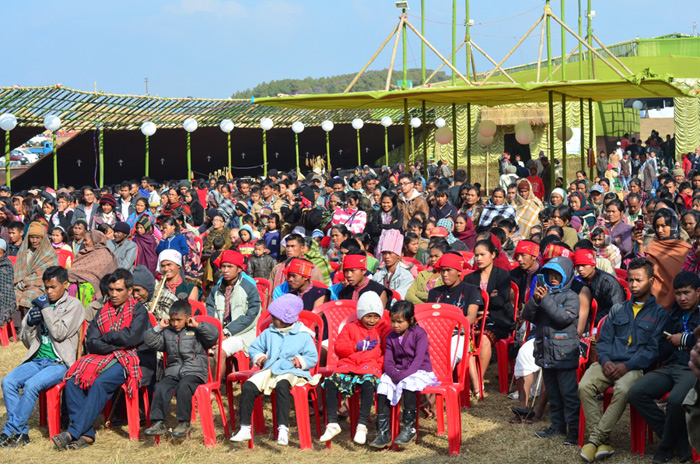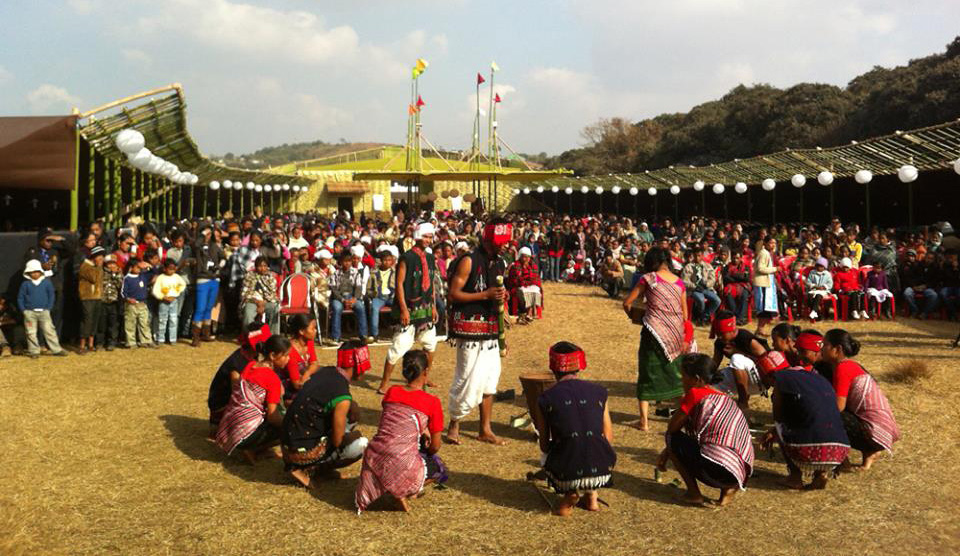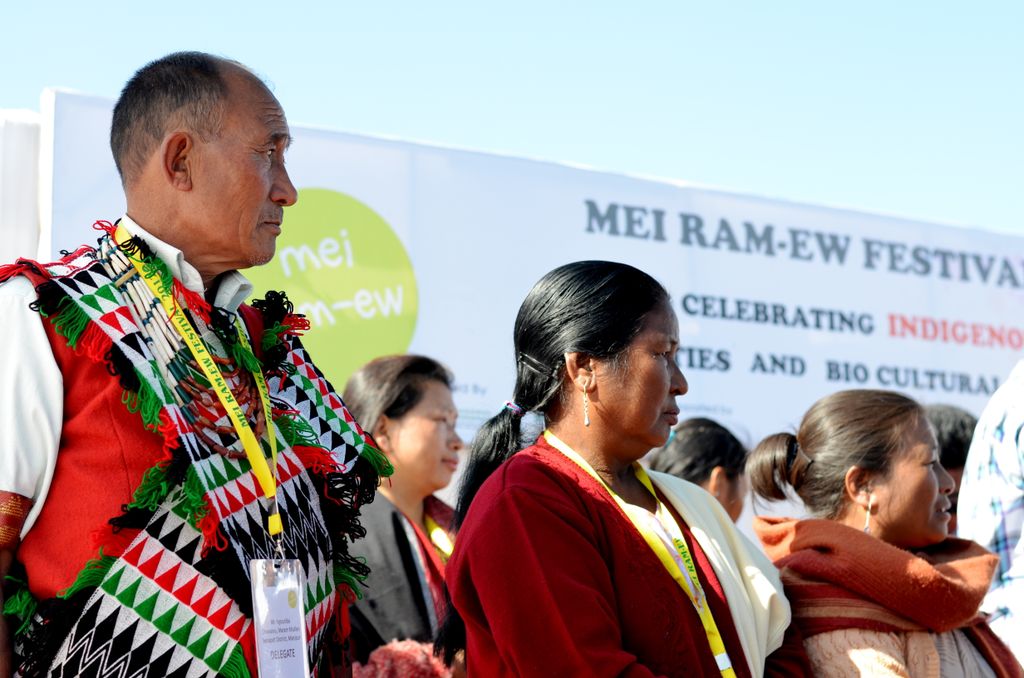The Mei Ram-ew 2013 opened to drum beats with Lyngdoh Mawphlang leading the 4 Chief Guests of the event and the delegate community representatives accompanied by the NESFAS team to the dais. The Chief Guests are the custodians and guardians of culture who shared their concerns about the disappearance of the rich diversity from their villages and the urgent need to protect and revive them. Phrang Roy, Chairman of NESFAS shared the urgent need to revive our rich but disappearing biodiversity and lead a sustainable lifestyle if we are to face-up to the consequences of the looming Climate Change. The Guest of Honour, Consultant Chef, ITC Hotels emphasized the need to ensure hygiene in our hotels and restaurants, especially since Food Tourism can much boost the local economy.
 The 2-day Mei Ram-ew 2013, saw over 10 000 visitors from Shillong and many villages around. The Mei-Ram-ew opened yesterday with 200 delegates from 28 communities from as close as Mawphlang and Sohra and as far as from Bhutan, Sikkim, Nagaland, Mizoram, Tripura, and Meghalaya to share and exchange their knowledge about rich diversity. The delegates displayed over 200 varieties of local foods – grains, millets, vegetables, fruits, roots, wild edibles and their own special ways of cooking them. There were also handicrafts, pottery and textiles.
The 2-day Mei Ram-ew 2013, saw over 10 000 visitors from Shillong and many villages around. The Mei-Ram-ew opened yesterday with 200 delegates from 28 communities from as close as Mawphlang and Sohra and as far as from Bhutan, Sikkim, Nagaland, Mizoram, Tripura, and Meghalaya to share and exchange their knowledge about rich diversity. The delegates displayed over 200 varieties of local foods – grains, millets, vegetables, fruits, roots, wild edibles and their own special ways of cooking them. There were also handicrafts, pottery and textiles.
One of the most memorable and moving moments were when the communities brought and exchanged gifts with other communities.
The highlights of Day-1 were the workshops for the communities on Millets and Honey where guest speakers from Tamil Nadu and Andhra Pradesh shared their successful experiences and knowledge. The communities too shared their concerns for these disappearing food from their culture and expressed their need and desire to revive these.
 Gunjan Goela along with young students from IHM demonstrated glamourous recipes using locally grown millets and vegetables. Similarly Bablu Ganguly shared Timbaktu Collective experience of field to plate – growing organically and value-added processing – of Millets. Robert Leo from Keystone Foundation, Tamil Nadu shared their experience with reving Honey.
Gunjan Goela along with young students from IHM demonstrated glamourous recipes using locally grown millets and vegetables. Similarly Bablu Ganguly shared Timbaktu Collective experience of field to plate – growing organically and value-added processing – of Millets. Robert Leo from Keystone Foundation, Tamil Nadu shared their experience with reving Honey.
Day-2 saw special dances and music by various communities, indigenous cooking competitions, demonstrations of pottery making, vegetable dyeing, basket making, and cooking.
There were special fine-dining areas set-up by Cafe Cherra and the Naga Mandarin that served local food in a classy setting that glamourised local food.
The Mei Ram-ew 2013 came to a close amid much fun and celebration with the preparation of the Disco Soup. As the name suggests the delegates, visitors, and the communities cut and chopped vegetables to the rhythmic beat of energetic music.
The festival was a living example of what happens when communities come together in mutual respect and trust committed to honour and sustain their deep roots and bring together their wisdom and knowledge.
Written by Radha Kunke from Ground Zero+




Pingback: Ground Zero + | More than 10 000 visitors make Mei Ram-ew a resounding success! Posted on December 16, 2013 by nesfas